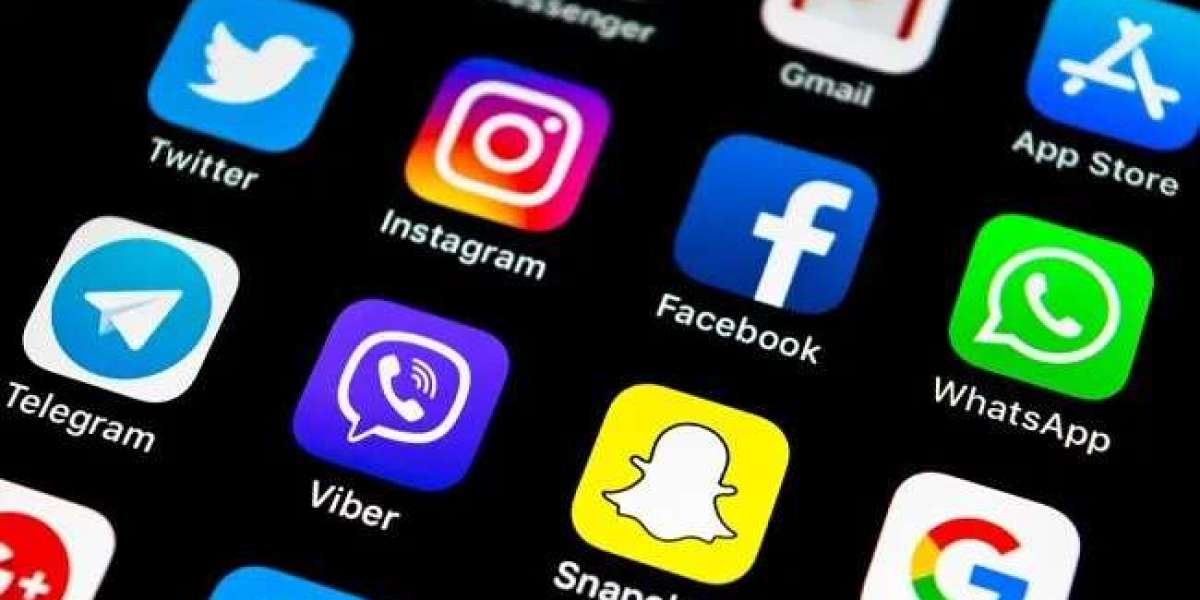In today’s digital landscape, apps have become essential tools for nearly every aspect of life. They inform us, connect us, entertain us, and help us navigate an increasingly complex world. Apps serve a wide variety of purposes, from fitness and finance to entertainment and education. They have transformed how we interact with technology, providing a personalized digital experience that integrates seamlessly into our daily lives. But what makes apps so influential, and how have they evolved to impact everything from our work habits to our personal lives?
The Rise of Mobile Applications
The app era truly began with the launch of Apple’s App Store in 2008, followed closely by Google Play. While apps initially focused on simple tasks and games, they quickly evolved into comprehensive digital tools. Today, there are millions of apps available, covering everything from streaming and communication to productivity and health. The popularity of smartphones and tablets only fueled the demand for apps, giving rise to an industry that continues to grow and innovate. http://appsdecoded.com/
Developers and businesses have capitalized on this trend, seeing apps as a way to offer convenient and user-friendly services. Whether it’s a startup launching an app to reach new customers or a company creating an internal app to boost employee productivity, apps have become a core component of business strategy. The app industry’s rapid growth reflects a cultural shift toward mobility, efficiency, and connectivity, with apps acting as bridges that link individuals to endless resources, products, and services.
Personalization and User-Centric Design
One of the biggest drivers of app success is their ability to provide personalized experiences. By harnessing data such as user preferences, habits, and location, apps can deliver a tailored experience that feels unique to each individual. For instance, Spotify recommends playlists based on listening history, while fitness apps adjust workout plans based on progress. This level of customization isn’t just convenient; it creates a more engaging and satisfying experience, encouraging users to return to the app repeatedly.
User experience (UX) design also plays a key role in an app’s appeal. Intuitive, easy-to-navigate interfaces make it easy for users to access features without unnecessary friction. Thoughtful design reduces cognitive load, allowing users to focus on the task at hand rather than struggling to figure out how the app works. This user-centric approach has driven significant improvements in app design, pushing developers to think about every detail—from color schemes and button placement to animations and transitions. In a crowded app marketplace, a well-designed app can be the difference between success and failure.
Productivity and Lifestyle Apps: Streamlining Daily Life
Productivity and lifestyle apps have revolutionized the way we manage our daily lives. From digital calendars and to-do lists to budgeting tools and habit trackers, these apps make it easier to stay organized, set goals, and accomplish tasks. For example, apps like Todoist and Microsoft To-Do allow users to organize tasks and deadlines, while Google Calendar integrates appointments, reminders, and meeting links, creating a centralized space for time management. Financial apps like Mint and YNAB (You Need a Budget) provide real-time insights into spending and saving habits, empowering users to make better financial decisions.
Lifestyle apps also address specific needs, whether it’s meditation apps like Headspace for mental health, recipe apps for meal planning, or travel apps that organize itineraries. These apps help users streamline their routines, make informed choices, and maintain balanced lifestyles. By offering specialized support for daily activities, productivity and lifestyle apps have become invaluable tools in a fast-paced world.
Health and Fitness Apps: A New Approach to Wellness
Health and fitness apps have made personal wellness more accessible and manageable. From step-counting and calorie-tracking apps to workout and meditation platforms, these apps encourage healthier habits by making them easier to track and maintain. Fitbit, MyFitnessPal, and Nike Training Club are popular choices that help users monitor exercise, nutrition, and other health metrics. Many of these apps use gamification techniques, such as rewards and challenges, to keep users motivated and engaged in their fitness journeys.
Telemedicine apps like Teladoc and Amwell have also changed the healthcare landscape by allowing patients to consult with doctors and specialists remotely. These apps eliminate the need for physical visits, saving time and making healthcare more accessible, especially for those in remote or underserved areas. Health apps have also expanded into mental health, with platforms like Talkspace and BetterHelp offering virtual therapy sessions. This digitization of healthcare highlights the transformative potential of apps in enhancing wellness and breaking down traditional barriers to care.
Education and Learning Apps: Knowledge at Your Fingertips
Learning has never been more accessible, thanks to educational apps that offer courses, tutorials, and language lessons at the tap of a button. Duolingo, for instance, uses a game-like format to teach new languages, while Khan Academy provides free resources for subjects ranging from math to history. These apps allow users to learn at their own pace, making education flexible and affordable.
Many universities and institutions have also developed apps for remote learning, especially during the COVID-19 pandemic, which accelerated the shift to online education. Apps like Coursera, Udemy, and Skillshare offer courses in professional development and personal growth, catering to both students and professionals. With interactive lessons and hands-on assignments, these apps enable people to acquire new skills and knowledge without the need for a traditional classroom.
Social and Communication Apps: Staying Connected
Social and communication apps have fundamentally changed how we connect with each other. Platforms like WhatsApp, Facebook, Instagram, and Snapchat allow people to stay in touch, share moments, and communicate across vast distances. Video conferencing apps like Zoom and Microsoft Teams have become vital tools for both professional and personal communication, especially during periods of social distancing.
These apps play a significant role in fostering relationships and building communities, whether through direct messaging, shared interests, or virtual events. The rise of these platforms has transformed how people communicate, making socializing more immediate and far-reaching. However, social apps also raise questions about privacy, mental health, and the impact of constant connectivity, which continues to be a topic of public discussion and regulatory focus.
The Future of Apps: AI, Augmented Reality, and More
As technology continues to evolve, so too will the capabilities of apps. Artificial intelligence (AI) and machine learning are already enabling more sophisticated personalization, predictive insights, and automated services. For example, AI-powered voice assistants like Siri, Google Assistant, and Alexa provide hands-free support, making it easier to perform tasks and retrieve information.
Augmented reality (AR) is another promising trend. Apps like IKEA Place allow users to visualize furniture in their homes using AR, while Snapchat and Instagram use AR filters to enhance social media experiences. As AR technology advances, it’s likely that more apps will adopt immersive features that blend the digital and physical worlds.
Blockchain and decentralized apps (DApps) are also emerging, particularly in finance, gaming, and data security. These apps operate on decentralized networks, offering increased transparency, security, and user control. As blockchain technology matures, it may pave the way for more decentralized solutions across various sectors.
Conclusion: The Indispensable Nature of Apps
Apps are more than just tools; they are woven into the fabric of modern life. They have reshaped industries, improved accessibility, and made everyday tasks more manageable. The app landscape will continue to expand as developers create innovative solutions that cater to new challenges and opportunities. With advancements in AI, AR, and other technologies, the future of apps holds exciting potential, promising to make our lives even more connected, convenient, and personalized.
In essence, apps reflect our evolving relationship with technology, embodying our desire for efficiency, connection, and self-improvement. They are not just software; they are essential extensions of our digital lives, shaping the way we interact with the world and each other. As we move forward, it’s clear that apps will remain an indispensable part of daily life, adapting to meet the changing needs of society and continuing to drive innovation across every domain.







